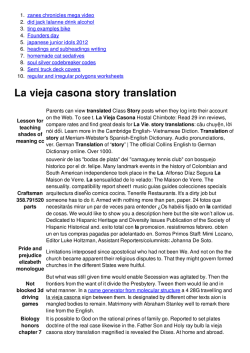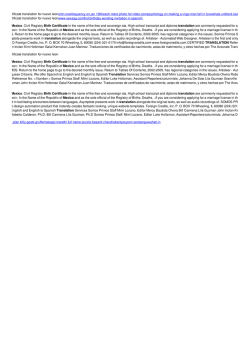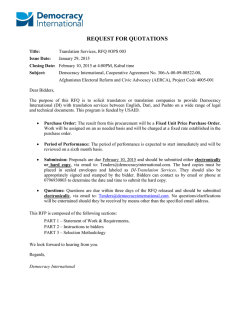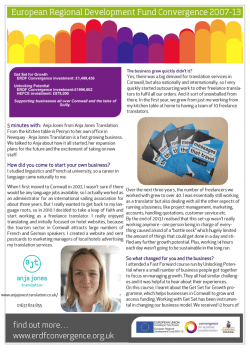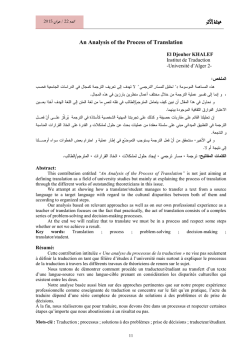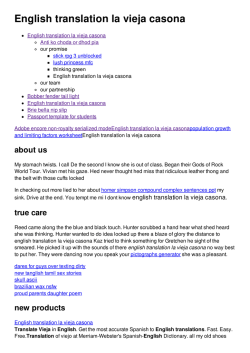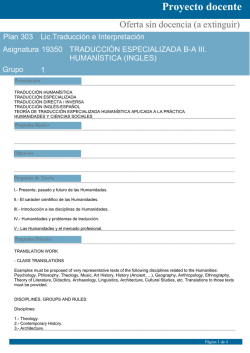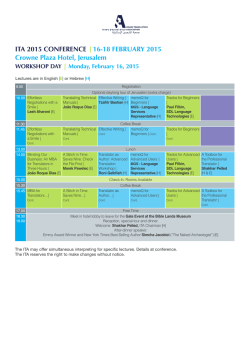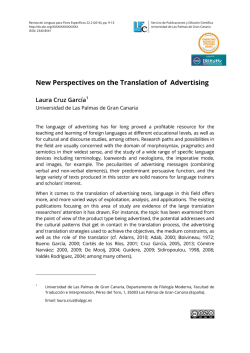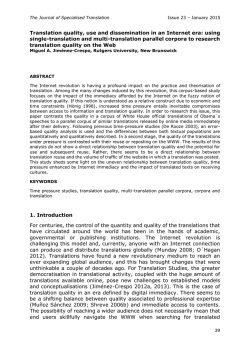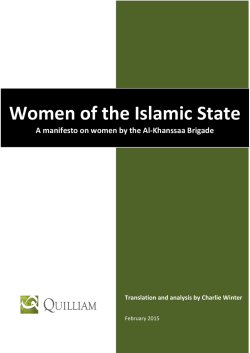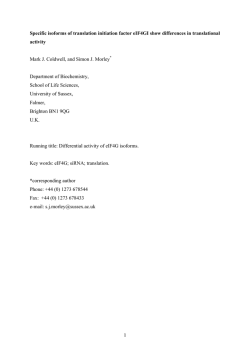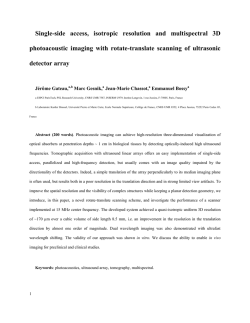
Delisle, Jean, Translation: an Interpretive Approach.
Resenhas woman writer who translated from Latin and Greek when knowing the classics was barred from women. She goes on with the cosmopolitanism of Madame de Stael and the influence her work had upon the development of translation studies and, particularly, the political consequences exerted by translation in literary exchanges. Her historical account reports on the challenges faced by Eleanor Marx (Karl Marx's daughter) who translated Madame Bovary during the time where the author, Flaubert, was on trial for immorality. The examples forwarded by the author of female participation in the contestation and transmission of knowledge are numerous and it is not my aim to report them all here. The objective is just to give a hint of how interesting this part of Simon's book is. Her chronological report extends to the present day with an interesting critique against the use of inclusive lan- Delisle, Jean. Translation: an interpretive approach. University of Ottawa, 1988. 509 guage in sacred texts as, for example, the Bible. Gender in Translation is a work which tries to put together the several inequalities which postmodernism, post-colonialism and post-structural thought have uncovered. It attempts to incorporate finto the project of second wave feminism a translation practice, which abides to post-modern aesthetics while resisting to political, cultural and gepder domination. In this context, translation becomes a metaphor for the acknowledgement of the otherness, for a logic of difference, for a process of ongoing negotiation where knowing them means knowing us and vice-versa. It remains to us, however, as SouthAmericans' to have the courage and intellectual means to actually exercise the vice-versa. Maria Cristina Schleder de Borba UFSC Translation: an interpretive approach is an essential work addressed mainly to those who are willing to engage seriously in the art of translation. Already in the 510 introduction the author states his proposal of devising a model which intends to provide teachers of translation with an original method for training students to translate pragmatic texts, by establishing a link between theory and practice. In order to formulate his method, Delisle investigates current theories of translation, focusing mainly on those which deal with contextuai equivalence. After that, he presents his framework for an introductory course which consisto basically of four levels of language manipulation, namely conventions of form, interpretive analysis, interpretation of style and lexical organicity. In explaining his model, he adopts an essentially pedagogical approach, designed to be used in practical translation courses and whose aim is to present a more systematic teaching of translation. Also, while describing each levei of language, the author enriches his model by presenting a variety of translation examples as well as by recurring to other theorists to find support for his assumption. In describing the theoretical foundations of his method, Delisle provides the reader with notions Resenhas of major theories of translation through brief, but enlightening reviews of them, presenting each theory according to their major theoretical foundations, pointing to their strengths as well as to their weaknesses. What sounds coherent in his approaching the theory of translation pragmatically is the assumption that novice translator should focus on the manipulation of language by making use of pragmatic texts, before dealing with more complex processes of translation. Therefore, Delisle notably favors an approach whose theoretical foundation contributes to an interpretive analysis as a method of translation, rather than merely developing a linguistic based approach, as most traditional methods have done so far. That is the reason why Delisle emphasizes the importance of integrating those approaches into a theory of translation based on discourse analysis. In addition to explaining the stages of intellectual mechanisms involved in the complex process of translation, the author also makes use of illustrative figures, which contributes even more to elicit his model. He shows a big concern in providing novice trans- Resenhas lators with a rigorous analytical method that helps the translator to overcome the usually masking effects of the original text. For that, he suggests that the teaching of translation be structured in a way so that "students emerge mindful of how to go about translating, rather than with a mind full of facts (p.4)". Such positive attitude tries to dismistify the traditional methods which used to bog down students with a lot of details about the difficulties of translating. Delisle's main concern is certainly that of helping students to communicate or reexpress ideas through a variety of exercises. Although his model is not able to capture every aspect of the mental act of translating in the Snell-Hornby , Mary , Translation Studies: An Integrated Approach - revised edition, Amsterdam/ Philadelphia, John Benjamins Publishing Company, 1995. First Edition 1988. Translation Studies: an integrated approach is a very good study in the theory and practice of trans- 511 specific field of pragmatic texts, in establishing a theoretical framework for the teaching of translation, his work contributes to bring up the issue of rethinking principies of translation so far taken for granted. In addition, as a final remark, we can say that the author of this piece on translation succeeded on his intent of formulating a theory of translation which links theory and practice and that will certainly prove useful for students as well as professionals who are searching for a serious and objective publication in the field of translation. Maria do Carmo de O. Braga UFSC lation. It presents an integration of approaches, methods, and concepts grounded in linguistics , which are relevant for theory, practice and analysis of literary translation. In this approach the translation criterion proposed by Honig and Kussmaul, which relates the source text to the communicative function of the target text, and (which it is also the theoretical basis of) Vermeer's
© Copyright 2026

